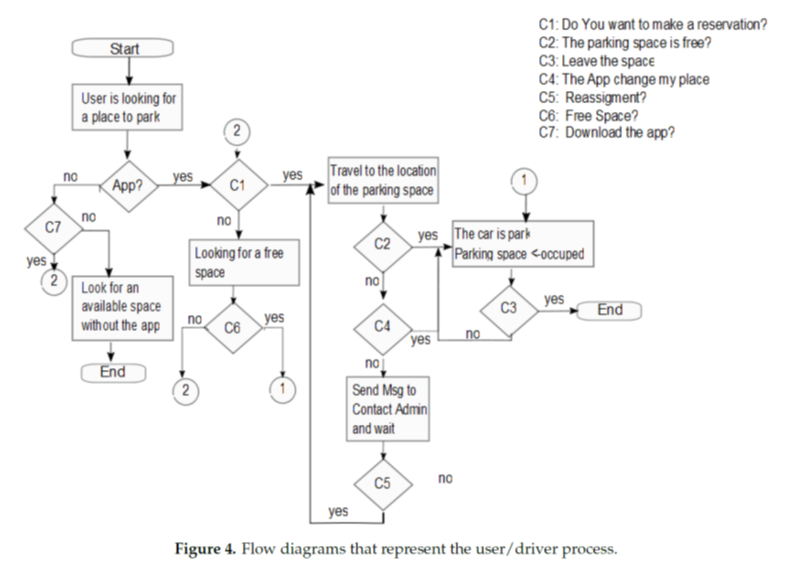
Researchers Luis F. Luque-Vega, David A. Michel-Torres, Emmanuel Lopez-Neri y Miriam A. Carlos-Mancilla, from the Centro de Investigación, Innovación y Desarrollo Tecnológico CIDETEC-UVM, Universidad del Valle, México, and Luis E. González-Jiménez, from the Department of Electronics Systems and Computing, ITESO AC, Mexico, published an article on Sensors on 8 march 2020, regarding IoT Smart Parking. The article provides an up-to-date review on this issue. Here are some of the key issues.
Humanity is currently experiencing one of the short periods of transition thanks to novel sensing solutions for smart cities that bring the future to today. Overpopulation of cities demands the development of solid strategic plannings that uses infrastructure, innovation, and technology to adapt to rapid changes. To improve mobility in cities with a larger and larger vehicle fleet, a novel sensing solution that is the cornerstone of a smart parking system, the smart vehicular presence sensor (SPIN-V, in its Spanish abbreviation), is presented. The SPIN-V is composed of a small single-board computer, distance sensor, camera, LED indicator, buzzer, and battery and devoted to obtain the status of a parking space. This smart mobility project involves three main elements, namely the SPIN-V, a mobile application, and a monitoring center, working together to monitor, control, process, and display the parking space information in real-time to the drivers. In addition, the design and implementation of the three elements of the complete architecture are presented.
Nowadays, several applications in scientific areas such as medicine, agriculture, social sciences, and computer sciences, as well as non-scientific areas, such as government, society, and industry, among others, have been boosted by the implementation of Internet of things (IoT) techniques. IoT is expressed in diverse areas that are classified according to the problems that can be solved, e.g., those in health, agriculture, networks, cities, and sports, among others. Future sensing solutions will be embedded in large automation systems, such as smart factories, buildings, and cities.
Some of the current solutions are focused on the implementation of smart cities solutions. Smart cities is a concept that allows integrating technologies into a community intending to make life easier with minimal effort
Smart cities use infrastructure, innovation, and technology for adapting the changes brought about by the overpopulation of cities and thus contribute to the reduction of carbon dioxide emissions, decreasing energy consumption, and promoting economic, social, and environmental development.
One of the first steps to be implemented to upgrade the traditional cities to become smart cities is smart parking.
Many cities around the world have already started implementations of smart parking projects, making life easier. Intelligent parking helps drivers to efficiently and effectively search for parking spaces through information and communication technology. In addition, intelligent parking spaces are systems that optimize the way of parking, either by streamlining the process or by reducing the space required.
The authors point out that the proposed system is composed of three elements. The first is the development of an Intelligent Vehicular Presence Sensor (SPIN-V, in its Spanish abbreviation) installed in parking spaces, which stores, processes, and notifies the state of a parking space. The second is the intelligent parking system (SEI-UVM, in its Spanish abbreviation); it is available through a mobile application to monitor and manage parking spaces and also allows users to make reservations for any available space. The third is a monitoring center that gathers information about the complete system, users, and SPIN-V sensors.

Each parking space is equipped with a SPIN-V located in the middle of the backend of parking spaces. The mobile application is available for the user/driver to control and reserve a parking space while the monitoring center can be operated by the owner of the private parking lots to manage and control the parking spaces and the reservations. The information shared by the app is stored in a database and observed by the monitoring center at OBNiSE. All the information is sent from the SPIN-V to the cloud. In addition, the exchange of information is available through WiFi protocol communication.
The study highlights that the SEI-UVM can be used as a management and control system of private parking lots, in which the availability of parking spaces are shown in real-time to the driver/user through a mobile app. In this app, the user is able to enter a profile and register the vehicle’s license plate, monitor the available parking spaces up-to-the-minute, reserve a parking space, and obtain different route recommendations to get to the parking lot.
On the other hand, the SPIN-V involves a distance sensor to detect the entry of a vehicle to the parking space, a camera to take an image of the vehicle’s plate, and an LED indicator and buzzer to inform the status of the parking space. Moreover, the information on the occupation of the parking spaces is displayed in real time to the monitoring center that ensures 24/7 functionality.

A parking space can be in one of the following statuses: FREE, OCCUPIED, BOOKED, HOLD, and WAIT. The app shows users what status each parking space is inside the parking lot. Each status has a defined LED color assignation.
The initial state of a parking space is FREE. If the driver/user has the app on his/her phone or they are willing to download it to use the SEI-UVM, he/she will receive the parking availability in real-time. Then, the user/driver can decide between booking a parking space through the app or looking for a parking space traditionally.

If the driver/user books a parking space by the app, the chosen parkingspace status changes to BOOKED. He/she has to travel to the location of the parking space. When he/she arrives with his/her car to the parking space, the status of the SPIN-V changes to OCCUPIED and, when the car leaves, the state changes to FREE. When a difficulty is presented such as another driver enters a parking space with status BOOKED, the SPIN-V sensor will take some actions to always ensure the availability of the system.

Conclusions
The researchers underline that this integral solution of intelligent mobility, which was implemented in a university campus outdoor car parking, aims to reduce the search time for outdoor parking in times of greater road congestion within the campus.
The proposed architecture of the solution of the SEI-UVM is divided into three main blocks: SPIN-V, the mobile app, and the monitoring center (OBNiSE), where the key piece is the SPIN-V IoT sensor.
It is designed as a compact device that can be adaptable to different environments and does not need an expensive infrastructure installation. In addition, it allows solving the challenges of non-vision systems (individual vehicle control through the reading of the text of the vehicle license plate) and in particular the advantage over visual systems as the infrastructure installation cost is much lower, since it does not require a wiring system.
In addition, the text recognition process of the plate is carried out in the SPIN-V device then only the text is uploaded to the cloud instead of an image or video. In summary, the SEI-UVM allows distributing the reserve management to the users and it is able to gather more information and communicate with the user. Finally, the OBNiSE provides the management of the parking spaces status to be consumed by the mobile app.
The authors stress that this implementation gave way to the implementation of concepts of a smart city on campus, towards the construction of a Smart Campus, which would allow evaluating strategies in a system with the same complexity of a big city, but in an environment of greater control, before implementing it in a traditional city or a smart city. This proposal is framed as part of the university’s strategy to support the government’s interest in transforming the city of Guadalajara as the first smart city in Mexico.
As a result, the research concludes, future work will be focused on establishing the replication strategy in a smart city such as Guadalajara and assessing the scalability of the proposal, validating the scalability and interoperability properties, key elements necessary for the implementation of solutions in a smart city.